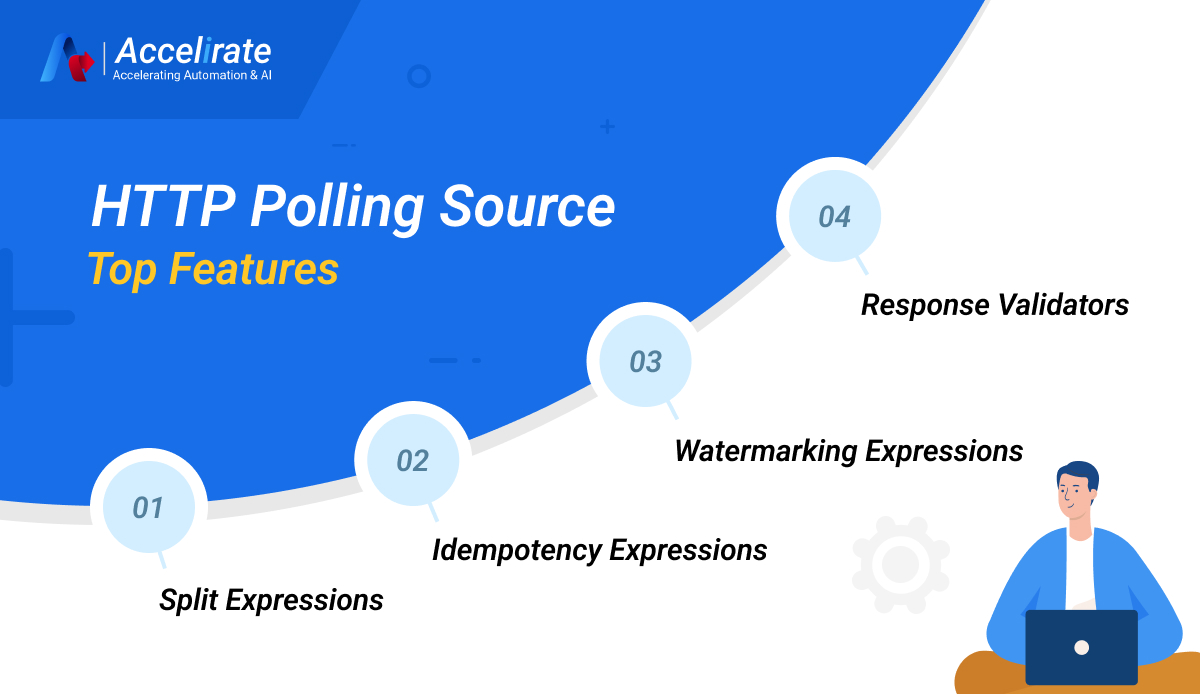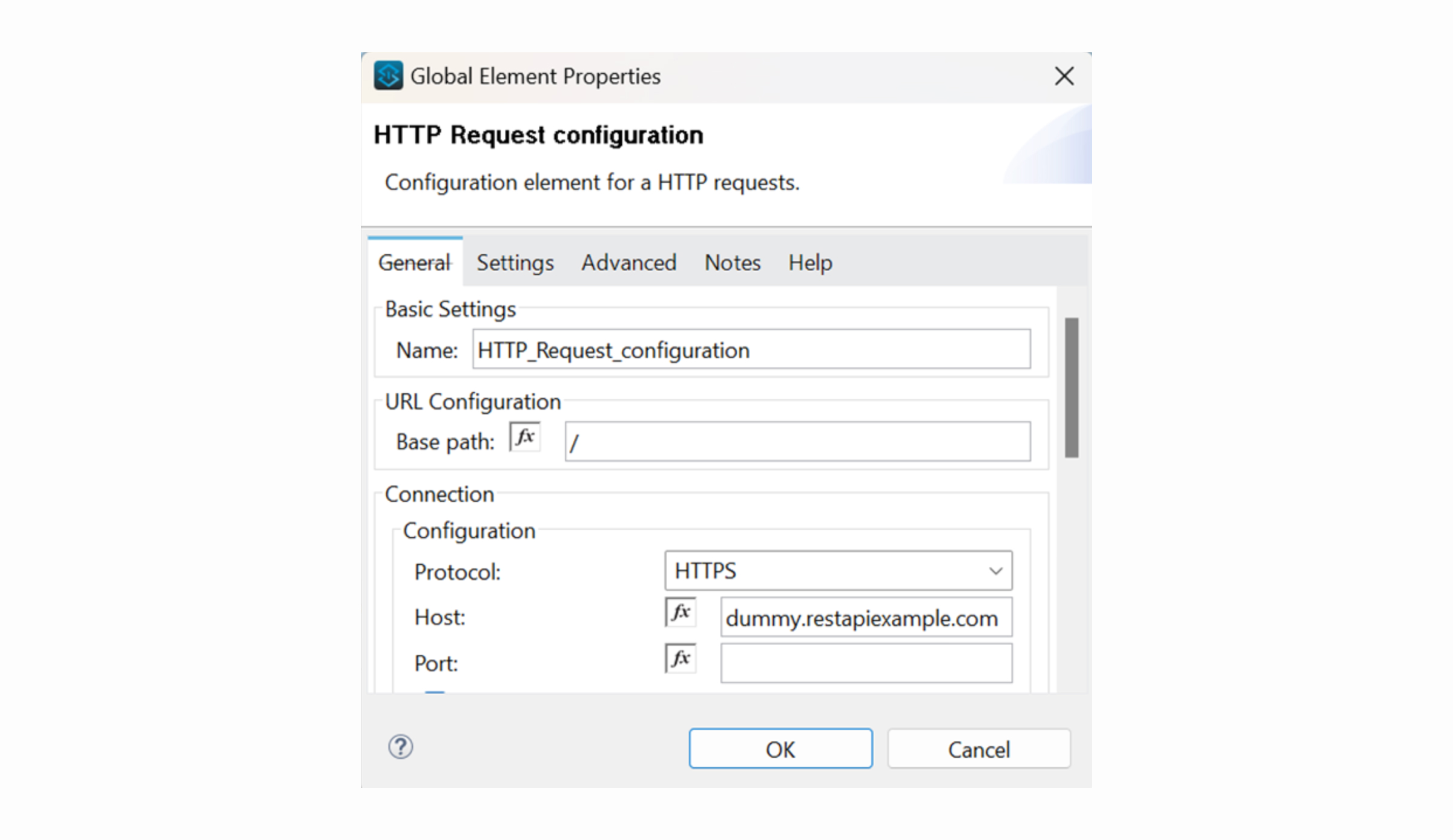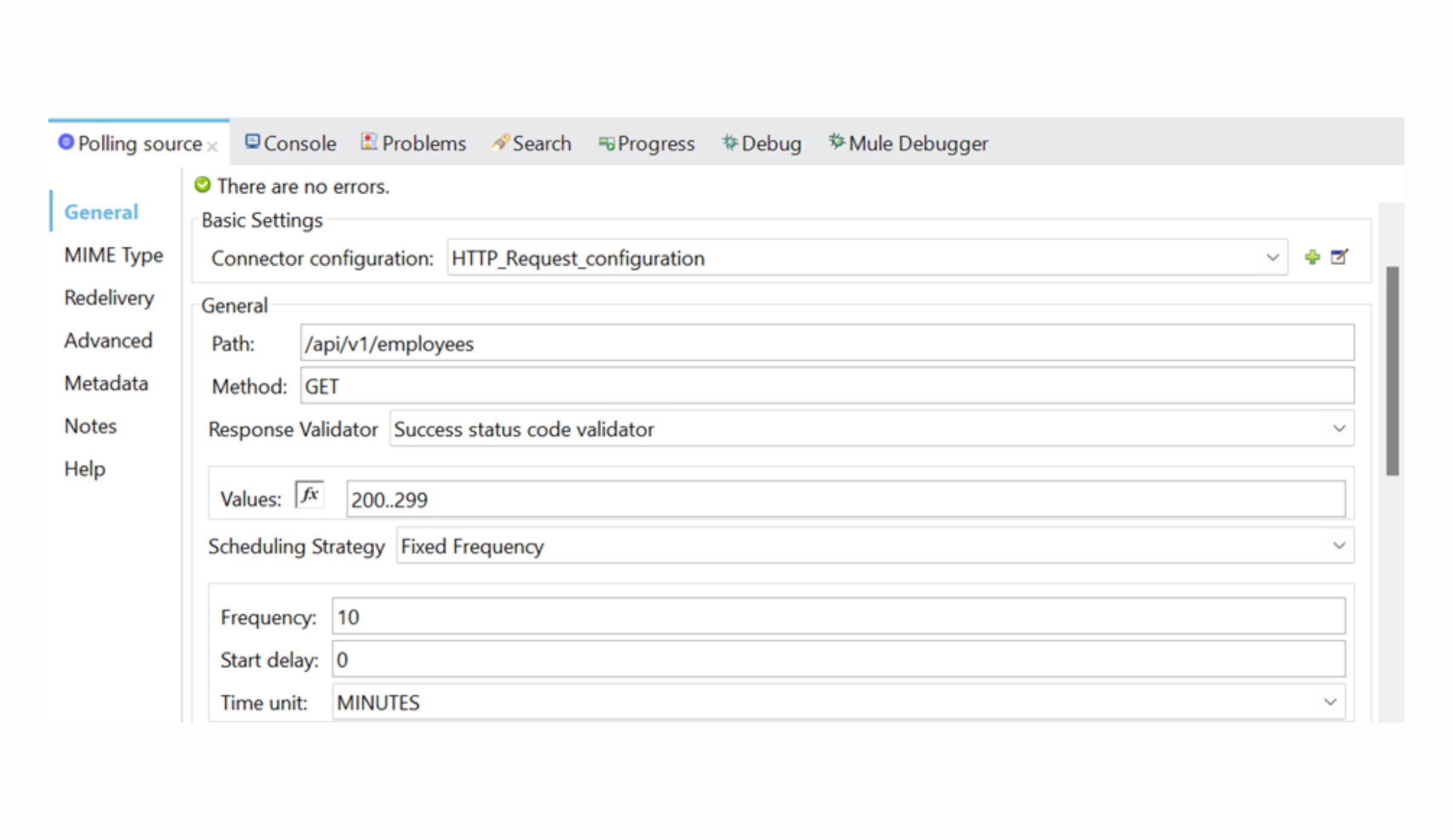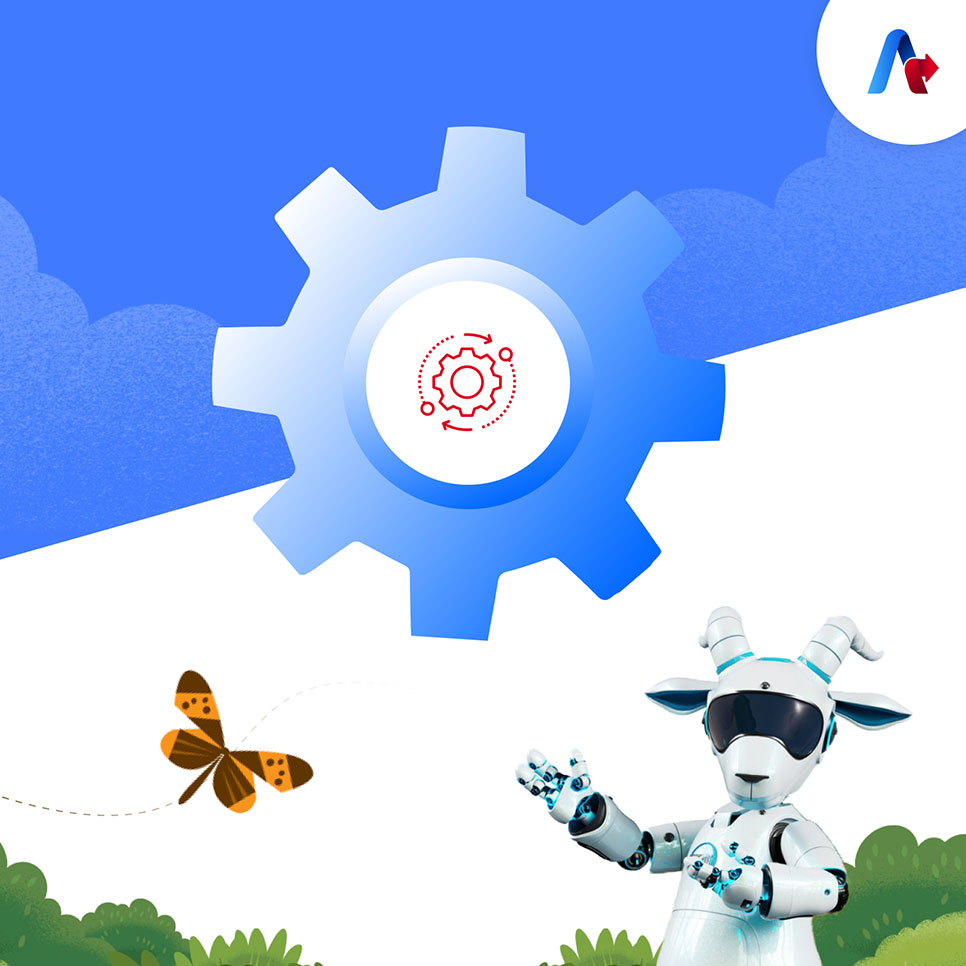HTTP Polling
BLOG
Do you ever find yourself stuck waiting for updates from a website that refreshes only once an hour? It can be frustrating, especially when you are working on a project that requires the latest information. You could spend time constantly refreshing the page, hoping for new data, or you could use a smarter approach.
That's exactly where MuleSoft's HTTP Polling Source steps in. It is like having a reliable assistant working quietly behind the scenes. This powerful tool automatically fetches fresh data from websites and APIs whenever you need it. No more manual checking, no more waiting, just the information you need being delivered straight to your system.
This is just a brief overview of the HTTP Polling Source to let you imagine all the possibilities it can bring along. Now, let’s understand its full capabilities and explore everything it can do for you.
What is HTTP Polling Source?
HTTP Polling Source is a connector that is part of the HTTP module provided by MuleSoft. It has been available from version 1.8 of HTTP. It is a Mule event source that sends an HTTP request to a server on a time-based condition. This connector enables you to communicate with any HTTP service without waiting for any user action to trigger the request, by executing a scheduled request. It replaces the need to have a user send an HTTP request, like that in the HTTP source listener.
Example: You are a retail manager overseeing multiple stores. You want to track sales data from each store's online system every evening to analyze performance trends. With http long polling, your system can automatically fetch this data without manual intervention. This streamlines your reporting process, giving you timely insights to make informed decisions and improve overall store performance. It's like having a virtual assistant that ensures you're always up-to-date with key business metrics.
But how does it differ from other tools? Let’s find out!
What Sets HTTP Polling Source Apart?
The HTTP Polling Source connector offers a unique combination of features that set it apart from other connectors like the HTTP request connector and the scheduler. What makes it different?
- External URL Configuration: Like the HTTP request connector, the HTTP Polling Source enables you to connect to the external HTTP services using the multiple methods at its disposal. This means you can specify the endpoint you want to communicate with.
- Scheduling Strategy: The scheduler is a Mule event source connector that carries out the flow execution at a scheduled frequency of time by allowing you to configure the scheduling strategy. Similar to the scheduler, the HTTP Polling Source lets you set up a scheduling strategy. You can define the frequency and timing of flow execution, ensuring tasks are carried out automatically at specified intervals.
- Combined Functionality: What sets the HTTP Polling Source connector apart is its ability to seamlessly integrate the capabilities of both connectors. Like the HTTP request connector, this also requires a global request configuration where you can set the external URL connection details. Similarly, like in the case of the scheduler, a scheduling strategy can be set.
This unique combination streamlines workflow management and data retrieval processes, making the HTTP Polling Source a powerful tool for efficiently handling timed tasks and data interactions with external services. Now, isn’t that really cool?
Got questions or ideas to discuss?
Talk to Our Experts Today!Best Features of HTTP Polling Source
Understanding the full capabilities of the HTTP Polling Source can bring you a whole lot of options for managing HTTP requests and responses in your MuleSoft workflows. Let’s explore some of its key features and how they can enhance your data handling.

Split Expressions
Ever needed to break down a big response into smaller parts for easier handling? Here is how split expressions can make it happen.
- The response received after the HTTP request operation can be used as it is or can be transformed and split into individual items which can be worked on in separate flows for execution.
- By passing an expression to the split expression field you can split the response into items and execute other operations on these individual items. The split expression essentially acts as a for each with the batch size as 1.
- The response returned after configuring the split expression is a single item.
Watermarking Expressions
Knowing the last point of operation is significantly important to maintain continuity. Don’t you agree? This is where watermarking expressions help ensure seamless execution across multiple interactions.
- Watermarking is a technique used to retrieve the point from which an operation should continue the next time it is executed.
- In case of a complex scenario where the server is required to know which response to send next watermarking expression comes to the rescue.
- The watermark expression is a field with value for the entire returned payload or every individual item. The watermark value is unique which could be an id or a timestamp.
Idempotency Expressions
Redundant requests can lead to data inconsistencies. This is where idempotency expressions spring into action to protect your system from processing duplicate messages.
- Idempotency is a property wherein if you send multiple identical requests only the initial request can cause a change. The subsequent identical requests would not result in any change.
- Setting an idempotency expression for the HTTP Polling Source will ensure that only unique messages will continue through the flow at a given time.
- This configuration ensures that payloads with the same ID are not processed at the same time.
Response Validators
How do you ensure the validity of responses in your workflows? Response validators can help you improve error handling and data integrity in your flows.
- When a response is received the HTTP polling source validates the response through the status code. A response with status code greater than 400 is considered as error.
- You can set the range of valid status code values for the response validator by selecting a success or failure status code validator.
- Split expression, watermarking and idempotency configurations are applied to the response only after it is validated against the set status codes.
How often do you find yourself manually refreshing web pages or APIs to fetch updated data?
Tell Us!How to Configure HTTP Polling Source?
Now that we have explored all the interesting features of the HTTP Polling Source, it’s time to learn about configuring it. Let's walk through the key steps to set up your HTTP Polling Source for seamless operation.
- HTTP Global Request Configuration: The first step is to define the foundation of your HTTP interactions. Since the HTTP polling request performs the request operation, an HTTP global request configuration is required. For that, you will need to set the host, port, basepath, and protocol. You can also include custom configurations required for implementation. This defines the relationship with the HTTP request operation.

- Basic Connector Configuration: After establishing the global settings, it’s time to specify the path, method, and response validator. You can configure a scheduling strategy, either fixed frequency or Cron. By default, the method is GET and the scheduling strategy is fixed frequency.

- HTTP Request Parameters: Similar to configuring an HTTP request, you can also configure parameters like setting the body, headers, URI parameters, and query parameters for the HTTP Polling Source.
- Advanced Configurations: Additionally, you can set the split expression, the watermarking expression, and the idempotency expression as per your requirement.

HTTP Polling Source Use Cases: How It Helps in Data Integration
Ever wondered how HTTP Polling Source can transform your data integration workflows? Let’s take a closer look at these practical use cases that can make data handling so much easier.
Dynamic Data Fetching
HTTP Polling Source would be useful to fetch data after querying an API using dynamic attributes. Imagine needing data periodically based on the values passed through the attribute. For example, making an HTTP request with a dynamic query parameter like datetime. Each response returned for each request will be different based on the attribute value. You can process the response as-is or use split expression configuration to handle each response separately with HTTP Polling Source connector.
Iterative Data Processing
HTTP Polling Source is handy when you need to repeatedly process data from the same request. Imagine making an API call that triggers a response from a backend system, like a database. This response is then used for deeper analysis or processing. For example, fetching data from an API, receiving a database response, and then using that data for mining more relevant information.
Data Archiving and Backup
HTTP Polling Source can be easily used to periodically fetch data from critical systems or databases and archive them. For example, you can set up periodic API requests using the connector, which returns responses from critical systems. These responses can then be used to facilitate data backup and archiving processes, ensuring data integrity and availability.
What are the biggest challenges you face when it comes to data integration and timely information retrieval?
Let’s Discuss!Let’s Simplify Integration with HTTP Polling Source
To sum it up, HTTP Polling Source brings the best of two existing connectors into one powerful solution. By enabling automatic HTTP request triggers without user intervention, this connector eliminates the need for an HTTP listener source, especially for periodic requests. With its unique features, HTTP Polling Source becomes a crucial tool in your toolkit for achieving seamless integration with external systems and fetching data from remote HTTP endpoints at regular intervals. But wait, there is more! Partnering with a trusted MuleSoft expert, like Accelirate, adds an extra layer of support. You can leverage our expertise to unlock the full potential of HTTP Polling Source stress-free and hassle-free.



